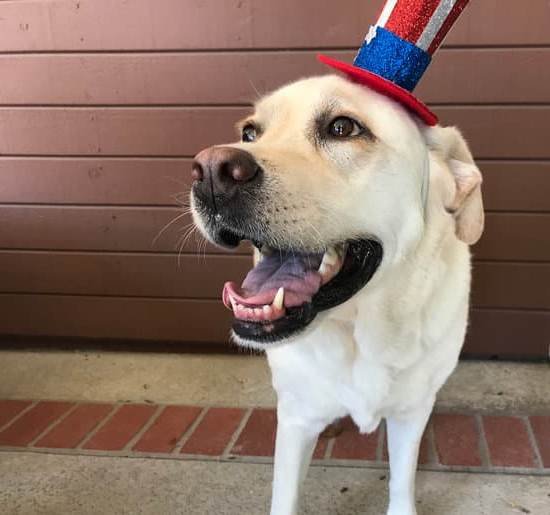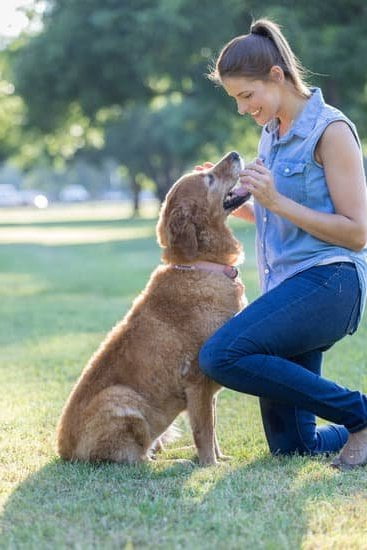House training is a crucial aspect of owning a dog, as it sets the foundation for a well-behaved and harmonious living environment. Training a dog to eliminate outside or in designated areas not only prevents messes indoors but also establishes boundaries and instills good habits.
However, the ease of house training can vary greatly depending on several factors, such as breed, size, and individual temperament. In this article, we will explore which dogs are the easiest to house train and provide tips for successful training.
The process of house training involves teaching a dog where it is appropriate to relieve itself and discouraging accidents inside the house. While some dogs quickly grasp this concept, others may require additional time, patience, and guidance. By understanding the factors that affect ease of house training, prospective dog owners can make informed decisions when choosing a breed that suits their lifestyle and training preferences.
Certain breeds are renowned for their ability to excel in house training. Labrador Retrievers, Border Collies, Cavalier King Charles Spaniels, and Poodles are among the popular breeds known for their intelligence, trainability, and quick learning abilities.
However, it’s important to note that small dogs can be just as easy to train as medium-sized or large breeds. Chihuahuas, Bichon Frises, and Miniature Schnauzers are examples of small breeds that are willing to learn and adapt well to house training techniques.
Ultimately, finding the right dog breed that fits your lifestyle is essential when it comes to successful house training. Whether you’re considering a small companion breed or a larger working breed like German Shepherds or Golden Retrievers; each type has its own specific needs and traits that may influence their ease of trainability.
In the following sections of this article, we will delve deeper into different types of breeds based on size categories-small, medium-sized, and large-and discuss which ones tend to be easy to house train. Additionally, we will provide valuable tips, techniques, and common mistakes to avoid in house training your new furry companion.
Understanding the Factors that Affect Ease of House Training
Understanding the factors that affect the ease of house training is crucial for anyone looking to bring a new dog into their home. While some dogs may catch onto house training quickly, others may require more time and effort. The factors that affect ease of house training can vary from breed to breed, as well as individual dog to dog.
One factor that can impact the ease of house training is a dog’s intelligence. Intelligent breeds tend to pick up on commands and routines more quickly, making them easier to train. For example, border collies are known for their high level of intelligence and excel in obedience training, including house training. On the other hand, some breeds may be more stubborn or independent, which can make house training more challenging.
The age at which a dog is introduced to house training can also affect its ease. Generally, puppies have a faster learning curve compared to adult dogs when it comes to house training. However, this does not mean that adult dogs cannot be successfully house trained; it may just require more time and patience. Additionally, factors such as previous living conditions or experiences can impact how quickly a dog adjusts to new potty training routines in a home environment.
| Factors | Description |
|---|---|
| Dog Breed | The breed of a dog can influence its temperament, trainability, and intelligence levels, all of which contribute to its ease of house training. |
| Dog’s Intelligence | Intelligent dogs tend to learn and adapt more quickly during the house training process. |
| Previous Experience/Background | A dog’s previous living conditions or experiences can impact its adjustment to new potty training routines in a home environment. |
| Age | Puppies generally have a faster learning curve for house training compared to adult dogs, but adult dogs can still be successfully trained with patience and consistency. |
Popular Breeds Known for Their Ease of House Training
When it comes to house training a dog, some breeds are naturally more inclined to learn and adapt quickly. These popular breeds have proven to be highly trainable and eager to please their owners. Whether you’re a first-time dog owner or an experienced one, choosing a breed that is known for its ease of house training can make the process much smoother and more enjoyable.
One popular breed known for its ease of house training is the Labrador Retriever. With their intelligence and willingness to please, Labrador Retrievers are often considered ideal for first-time dog owners. They are quick learners and respond well to positive reinforcement, which makes them easy to train in various aspects, including house training.
Another breed that excels in house training is the Border Collie. Border Collies are highly intelligent dogs with a strong desire to work and please their owners. Their intelligence and trainability make them quick learners when it comes to housebreaking. However, it’s important to note that these dogs also require mental stimulation and physical exercise in addition to house training.
Cavalier King Charles Spaniels are another popular breed known for their ease of house training. These affectionate dogs are quick learners and thrive on positive reinforcement during the training process. With their gentle nature and eagerness to please, Cavaliers make wonderful companions for individuals or families looking for an easy-to-train dog.
Poodles also rank high on the list of breeds that pick up house training easily. Poodles come in different sizes – standard, miniature, and toy – but all variations share similar traits when it comes to trainability. They are highly intelligent dogs that excel in obedience training, including housebreaking. Their ability to learn quickly combined with their desire to please makes poodles a top choice for many dog owners.
Small Dog Breeds That Are Easy to House Train
When it comes to house training small dog breeds, there are certain breeds that tend to excel in this area. These dogs may be small in size, but they are big in their willingness to learn and please their owners. Here are some small dog breeds that are known for being easy to house train:
- Chihuahuas: Chihuahuas may be the smallest dog breed, but they have a big personality and an eagerness to learn. With consistent training methods and positive reinforcement, Chihuahuas can quickly pick up on house training cues and become reliable when it comes to going potty outside.
- Bichon Frises: These adorable fluffy dogs are not only hypoallergenic but also highly adaptable and eager to please their owners. Bichon Frises respond well to positive reinforcement and consistency in training, making them relatively easy to house train.
- Miniature Schnauzers: Known for their intelligence and loyalty, Miniature Schnauzers are determined to please their owners. This makes them quick learners when it comes to house training. Establishing a routine and using positive reinforcement techniques can help ensure success with these spirited little dogs.
To effectively house train these small dog breeds, it is important for owners to create a consistent routine that includes regular bathroom breaks outside. Using a crate can also be an effective tool in the house training process as it helps teach the dog bladder control and prevents accidents inside the house.
Overall, while each individual dog may vary in their ease of house training, these small dog breeds mentioned above are generally known for being relatively easy to train in this aspect. With proper consistency, patience, positive reinforcement, and supervision, owners can successfully house train these lovable companions.
Medium-Sized Dog Breeds That Are Easy to House Train
When it comes to house training a dog, the size of the breed can definitely play a role. While all dogs are capable of being successfully house trained with patience and consistency, certain medium-sized breeds tend to excel in this area. In this section, we will explore some medium-sized dog breeds that are known for their ease of house training.
One medium-sized breed that is highly recommended for house training is the Australian Shepherd. These energetic and intuitive dogs are quick learners and respond well to training. Their high level of intelligence combined with their strong desire to please their owners makes them eager participants in the house training process.
Another medium-sized breed that is easy to house train is the Shetland Sheepdog. Known for their intelligence and responsiveness, Shelties are highly trainable dogs. They have a natural instinct to be clean and will quickly understand where they should eliminate. With consistent reinforcement and positive rewards, Shetland Sheepdogs can become reliably housetrained.
Similarly, Brittany Spaniels are another medium-sized breed that tends to excel in house training. These enthusiastic hunting dogs have a natural desire to please their owners, making them highly trainable. With proper guidance and consistent positive reinforcement, Brittanys can quickly learn where they should do their business and become fully housetrained.
| Breed | Characteristics |
|---|---|
| Australian Shepherd | Energetic, intuitive, intelligent, eager to please |
| Shetland Sheepdog | Intelligent, responsive, clean instincts |
| Brittany Spaniel | Enthusiastic, highly trainable, eager to please |
Remember, while these medium-sized breeds are known for their ease of house training, it is important to approach the process with patience and consistency. Establishing a routine, using positive reinforcement, and practicing active supervision are key techniques to ensure successful house training regardless of the breed.
Large Dog Breeds That Are Easy to House Train
When it comes to house training large dog breeds, there are several breeds that are known for their ease of training and quick learning abilities. These large dogs not only excel in house training but also tend to be friendly, intelligent, and adaptable. If you’re considering bringing a large dog into your home and want a breed that is easy to house train, here are some top choices:
Golden Retrievers: Friendly and Highly Intelligent Dogs that Excel in House Training
Golden Retrievers are not only popular family pets but are also highly trainable and have a natural inclination towards obedience. They are known for their friendly nature, which makes them easy to work with during house training. Golden Retrievers are intelligent dogs that quickly pick up on commands and thrive on positive reinforcement. With consistent training methods and plenty of praise and rewards, these dogs can easily become one of the easiest large breed dogs to house train.
German Shepherds: Devoted and Obedient, Making Training a Breeze
German Shepherds are known for their loyalty, devotion, and intelligence. These qualities make them a breeze to train when it comes to housebreaking. German Shepherds have a strong desire to please their owners, meaning they will be highly motivated during the training process. Early socialization and consistent positive reinforcement techniques will go a long way in successfully house training German Shepherds.
Boxers: Energetic and Quick Learners that Adapt Well to House Training
Boxers are energetic breeds that require regular exercise but they also have an innate sense of intelligence which aids in making them quick learners during the house training process. Their high energy levels make them eager to please their owners while their adaptability allows them to adjust well to the routine of housebreaking. Boxers respond well to positive reinforcement techniques, making the training a positive and enjoyable experience for both dog and owner.
Tips and Techniques for Successful House Training
House training is an essential part of owning a dog, ensuring that they can live comfortably in a home environment without causing any damage or inconvenience. While some breeds may naturally be more inclined to pick up on house training quickly, all dogs can be successfully trained with the right techniques and consistency. In this section, we will explore some tips and techniques for successful house training.
Crate Training: An Effective Tool for House Training
One effective method for house training dogs is crate training. Dogs are den animals by nature, and crates simulate this instinctual need for a small and secure space. When used correctly, crates can provide a safe and comfortable environment for dogs when they are unsupervised or during bedtime. The idea behind crate training is that dogs have an aversion to soiling their sleeping area, which helps in reinforcing their natural instinct to hold their bladder and bowels until taken outside.
When crate training, it’s important to introduce the crate gradually and associate it with positive experiences. Make sure that the crate is large enough for the dog to stand up, turn around, and lie down comfortably. Avoid using the crate as punishment or leaving them cooped up for long periods as it can create negative associations. Instead, start with short periods of time in the crate while providing treats or toys to keep them occupied.
Consistency is Key: Establishing a Routine
Consistency plays a crucial role in house training dogs. Establishing a routine helps dogs understand what is expected of them regarding bathroom breaks and reduces accidents indoors. Set specific times for feeding your dog meals and take them out shortly after eating to encourage them to relieve themselves outside. Additionally, schedule regular potty breaks throughout the day based on your dog’s age, activity level, and individual needs.
Using consistent cues can also aid in communication between you and your dog during house training. Choose a specific word or phrase, such as “go potty” or “do your business,” to signal to your dog that it is time to eliminate. Use this command consistently while taking them outside and reward them when they do so successfully.
Positive Reinforcement: Rewarding Good Behavior
Positive reinforcement is a powerful tool in house training dogs, as it motivates them to repeat desired behaviors. When your dog eliminates in an appropriate location, such as outdoors or on a designated potty spot, immediately praise them enthusiastically and offer rewards like treats or playtime. The goal is to create a positive association between eliminating in the right place and receiving rewards, which encourages your dog to continue doing so.
On the other hand, avoid punishing your dog for accidents indoors. Punishment can create fear and anxiety in dogs, hindering the house training process. If you find a mess inside, simply clean it up without reprimanding them; punishment after the fact will only confuse them and make it harder for them to understand what they did wrong.
Patience and Persistence: Dealing with Challenges in House Training
House training can be challenging at times, especially during the initial stages or with certain breeds that may require more patience and persistence. It’s important to remain patient and consistent throughout the process. Dogs thrive on routine and repetition, so continue following the established routine even if setbacks occur.
If accidents happen indoors, resist scolding or showing frustration towards your dog. Instead, focus on reinforcing positive behavior by rewarding successful elimination outside. Additionally, consider keeping a close eye on your dog by utilizing baby gates or keeping them somewhere you can easily supervise when you are unable to directly interact with them. This way, you can prevent accidents from happening before they occur.
By implementing these tips and techniques consistently and with patience, any breed of dog can become successfully house trained. Remember that every dog is unique and may have individual needs or learning curves, so it is vital to tailor your approach based on their specific requirements. With time, consistency, and positive reinforcement, you can enjoy a well-behaved and reliably house-trained dog.
Common Mistakes to Avoid in House Training
Efficient house training is essential for both the well-being of your dog and the cleanliness of your home. However, there are common mistakes that dog owners make during the house training process that can hinder progress and lead to frustration. In this section, we will discuss these mistakes and provide tips on how to avoid them.
One common mistake to avoid is punishment-based training. Some dog owners believe that yelling at or punishing their dogs when accidents occur will effectively teach them not to eliminate indoors. However, this approach can be counterproductive and actually slow down the house training process.
Dogs may become fearful or anxious about relieving themselves in front of their owners, leading them to hide or delay elimination, which can result in more accidents. Instead of punishment, positive reinforcement should be used to reward desired behavior.
Another mistake to avoid is inconsistency in your training approach. Dogs thrive on routine and consistency, so it is important to establish a consistent schedule for feeding, bathroom breaks, and exercise. Inconsistency in enforcing rules or allowing accidents inside can confuse your dog and make it harder for them to understand what is expected of them. Consistency helps reinforce good habits and makes it easier for your dog to learn where they should eliminate.
Overlooking medical issues is another mistake that can hinder successful house training. If your dog is consistently having accidents despite consistent training efforts, it may be worth consulting with a veterinarian to rule out any underlying medical conditions such as urinary tract infections or gastrointestinal issues. Some dogs may have difficulty holding their bladder due to health problems, so addressing these issues early on can prevent frustration and help you develop a more effective house training plan.
Lastly, lack of supervision during the house training process can lead to more accidents. It is important to actively monitor your dog’s behavior indoors until they are reliably housetrained. This means keeping an eye on them at all times and preventing access to areas of the house where accidents are more likely to occur. Using baby gates or keeping your dog in a crate when unsupervised can be helpful in reducing the chances of accidents.
By avoiding these common mistakes, you can set your dog up for success in house training. Remember to use positive reinforcement, establish consistency and routine, address any potential medical issues, and provide active supervision during the training process. With patience and persistence, you will be able to successfully house train your dog and enjoy a clean and well-behaved canine companion.
Conclusion
In conclusion, when it comes to house training a dog, it is important to consider various factors such as breed characteristics, size, and your own lifestyle. Labrador Retrievers, Border Collies, Cavalier King Charles Spaniels, and Poodles are popular breeds known for their ease of house training. These breeds are highly trainable and quick learners, making the house training process smoother for first-time dog owners.
In addition to popular breeds, there are several small dog breeds that are easy to house train. Chihuahuas, Bichon Frises, and Miniature Schnauzers are all small in size but big in willingness to learn. These adaptable and eager-to-please dogs make them ideal for those living in apartments or smaller spaces.
For medium-sized dog breeds that are easy to house train, Australian Shepherds, Shetland Sheepdogs, and Brittany Spaniels stand out. These energetic dogs excel at learning fast and are responsive to training methods. They also make great companions for active individuals or families.
Lastly, when it comes to large dog breeds that are easy to house train, Golden Retrievers, German Shepherds, and Boxers should be considered. These friendly and highly intelligent dogs have a natural inclination towards pleasing their owners which makes them quick learners during the house training process.
Ultimately, finding the right dog breed that works best for you and your lifestyle is crucial when it comes to successful house training. Consider factors such as energy level, intelligence level, and adaptability to ensure a smooth journey in training your new furry companion.
Keep in mind that regardless of the breed chosen, consistency in routine establishment along with positive reinforcement will contribute greatly towards a successful house training experience. With patience and persistence on your part as an owner coupled with love and care for your furry friend’s needs will undoubtedly lead to a strong bond between you both as well as creating a happy home environment for all.
Frequently Asked Questions
Which dog breeds are hardest to housebreak?
Housebreaking can be a challenging task for any dog owner, but certain breeds are often considered more difficult to housebreak than others. For example, some small breeds like Chihuahuas and Dachshunds tend to have a strong will and may require extra patience and consistency during the training process.
Other breeds known for being difficult to housebreak include Siberian Huskies and Afghan Hounds, which can be more independent and less eager to please their owners. However, it’s important to remember that individual temperament and the training methods used also play significant roles in a dog’s success with housebreaking.
What is the hardest dog to train?
When it comes to training difficulties, it’s important to remember that every dog is unique, so what may be challenging for one breed might not be for another. However, some breeds are commonly mentioned as being harder to train due to their independent nature or stubbornness. For instance, different terrier breeds like the Jack Russell Terrier and the Bull Terrier often rank high on the list of difficult-to-train dogs due to their inherent impulsivity and tenacity.
Similarly, certain sighthound breeds such as Greyhounds or Afghan Hounds can be more aloof and less inclined towards obedience training compared to other breeds. Nevertheless, effective training techniques and persistence can yield positive results regardless of the dog’s breed.
How long does it take to fully house train a dog?
The time it takes to fully house train a dog varies depending on several factors including breed, age, individual temperament, consistency in training methods, and owner commitment. On average, most puppies can learn basic housebreaking skills within six months while adult dogs might take slightly longer if they haven’t already been trained before. However, it’s crucial to understand that each dog progresses at its own pace – some may catch on quickly while others may need more time and repetition.
Consistency is key during this process since accidents or lapses in enforcing the rules can delay progress significantly. Additionally, incorporating positive reinforcement, regular bathroom breaks, and establishing a consistent routine can greatly expedite the house training process.

Welcome to the blog! I am a professional dog trainer and have been working with dogs for many years. In this blog, I will be discussing various topics related to dog training, including tips, tricks, and advice. I hope you find this information helpful and informative. Thanks for reading!





